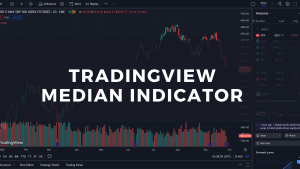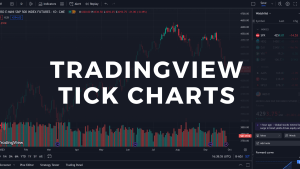This article on Price Action vs Indicators is the opinion of Optimus Futures, LLC.
- Both price action and indicators use past price data; the difference lies in how the information is processed.
- Neither method is inherently better for beginners; the key is understanding and using the chosen tools correctly.
- Personal preferences and how a trader uses their tools are more important than the debate between price action and indicator trading.
1. Price is Better Than Indicators
Price action traders often think their method is always better. However, price action and indicators are quite similar. Both use price info from charts like candlesticks or bar charts. Indicators just apply a formula to the same info. They don’t change what you see; they just process it differently.
When you interpret price action, you’re virtually doing the same thing mentally.
2. Indicators are Lagging – Price Action is leading
A trader who says indicators are lagging doesn’t understand their true purpose. Indicators use past price action (based on indicator settings) and show the result after applying a formula. So, indicators display outcomes from previous price action.
Similarly, traders analyzing pure price patterns, like Head and Shoulders or Cup and Handle, also look at past price action, which has already shifted from potential entry points.
Both methods use past price data and can be considered “lagging.” To reduce this lag, adjust the indicator’s time setting or analyze fewer past candlesticks. However, the less data you include, the less meaningful the analysis becomes.
3. Price Action is Simple and Better for Beginners
In trading, it’s not often that one method is better than another; it depends on how you use your tools. It’s like comparing a hammer and a screwdriver; both work well if used correctly, but neither is helpful if you don’t know how to use them.
For beginners in price action trading, it’s easy to feel lost without experience or guidance. Trading candlesticks can be complex, with factors like size, comparison to previous price action, and momentum and volatility in wicks and bodies often overlooked.
Don’t choose price action just because it seems simple; a trader unfamiliar with its nuances may misinterpret charts.
4. “Naked Trading” is Better Because Indicator Charts are Messy
Continuing from the previous point, the idea that indicator charts are messy isn’t valid. If you add too many oscillators and moving averages to a chart, it’ll get cluttered, but that’s not how indicator trading works.
Typically, traders choose one oscillator, like Stochastic, for momentum analysis, and another indicator, like Bollinger Bands, for chart studies.
Indicators offer guidance and help traders make objective decisions, with little room for subjectivity.
In contrast, price action traders using blank charts may feel lost without clear reference points, leading to emotional or impulsive actions. They can also overcrowd charts with support/resistance lines, trend lines, and candlestick components.
Upon closer examination, this argument doesn’t stand. Some traders prefer indicators for less subjectivity, while others choose price action analysis.
Can we really say that this chart…
…despite being “messy,” doesn’t provide more useful information than this?
5. Price Action is the Real Way of Trading
The last argument states that “professionals” don’t use indicators. However, it’s difficult to prove such a claim, as personal preferences play a role.
Indicators save time by focusing on specific chart aspects, like momentum, helping traders process data quickly and with less subjectivity.
It’s crucial to approach this topic with an open mind and not be overly biased. A trader should choose their tools wisely and understand the pros and cons of different methods.
There’s no right or wrong between price action and indicator trading; it depends on how a trader uses their tools for decision-making.
The Bottom Line
The debate between Price Action and Trading Indicators has been ongoing, and there are misconceptions surrounding both methods.
It’s essential for traders to approach the topic with an open mind, understand the pros and cons of each approach, and choose their tools wisely.
Ultimately, the effectiveness of either method depends on how the trader utilizes their tools to make trading decisions.
In short, performance rests on the trader and his/her use of a method and not the method itself.
For more on Price Action vs Indicators, read our Ultimate Guide to Price Action.
There is a substantial risk of loss in futures trading. Past performance is not indicative of future results.


















